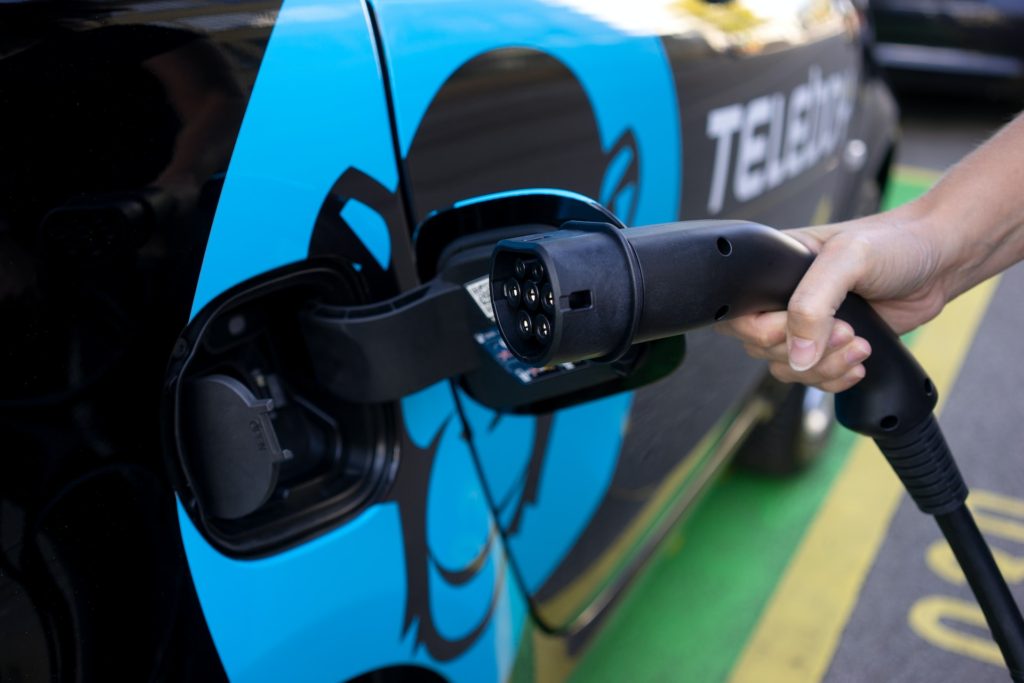Cover photo: Photo by Tommy Krombacher on Unsplash
Today’s Focus of Attention is reader-supported. We sometimes include products we think are useful for our readers. If you buy through links on this page, we may earn a small commission.
The proliferation of electric vehicles (EVs), the advances in fuel cells, and the progress in battery technologies suggest that a new era has started: the age of the electric car.
But this shift in paradigm also brings rivalry: hydrogen and battery-powered cars are competing for the position of King of the Road.
Both have their ups and downs. Which one is the best option?
In today’s article, we’ll be talking about hydrogen vehicles and the potential benefits they bring.
Here we go.
You don’t charge a hydrogen car

You can refill the tank as quickly as you do with petrol, eliminating the need for the battery to charge.
To illustrate this point, an EV needs at least 20 minutes to recharge at a fast-charging station, but if you plug it into your house outlet instead, it might take several hours.
There’s no issue with city driving, but for long drives, it’s a barrier. Particularly if you must queue and you have some vehicles before you. You would spend hours waiting.
You can drive more with a hydrogen vehicle

Broadly speaking, hydrogen cars have longer ranges, between 480 and 700 kilometres per tank of hydrogen, whereas most electric cars, such as the Nissan Leaf or Chevrolet Bolt, have 360 to 397 kilometres per charge.
However, the range depends on the brand (Tesla’s cars have a longer range), the capacity of the battery, and efficiency.
Faster, lighter, and more efficient

Weight is another advantage hydrogen cars have over EVs.
A hydrogen fuel cell system, including the tank, is far lighter than a lithium-ion battery one. So, the electric engine in a hydrogen vehicle doesn’t waste too much power pushing the mass of the car, resulting in better performance and acceleration.
Such extra energy could be used for more cargo in the case of pickups.
Additionally, hydrogen cars do not use catalytic converters or other emissions systems, further reducing weight.
Hydrogen ICE (internal combustion engine)
Automakers, such as Ford and Toyota, are working on internal combustion engines that burn hydrogen instead of petrol.
Those machines are still in their nappies, but could improve by replicating everything they need from their petrol counterparts and burning clean fuel.
How do hydrogen cars work?
In essence, hydrogen cars make electricity out of hydrogen; they don’t burn fuel as in combustion engines.
The car’s power system pumps hydrogen from the tank and sends it to the fuel cell, which separates electrons from protons, powering the electric motor that moves the car.
This is how a fuel cell works

It consists of an electrolytic membrane located between two oppositely charged electrodes: the cathode (the positively charged electrode) and the anode (the negatively charged electrode).
The vehicle’s power system sends hydrogen to the anode. Following this, the catalyst divides the hydrogen atoms into electrons and protons.
The electrons seek to go through the electrolytic membrane to get to the other side, but only protons are allowed. So, to reach the cathode, the electrons make their way through the cables coming out of the fuel cell, which are routed through the car’s motor and all the electric parts of the vehicle.
This journey powers the car.
Finally, the electrons join the protons at the cathode, which has air passing through it. When this happens, the oxygen in the air reacts with the hydrogen electrons and protons to form water, which then goes out of the tailpipe.
Downsides of hydrogen
Hydrogen cannot be harvested as a primary fuel; it has to be produced. Water must be split into hydrogen and oxygen molecules using an electrolyser, which requires energy.
The resulting product is labelled by colour depending on the process used to get the hydrogen.
Green hydrogen
This one is obtained by applying electricity from renewable sources such as solar or wind power. The drawback is that those machines remain costly. As a result, green hydrogen accounts for only 0.03% of global hydrogen production.
Grey hydrogen
Derived from natural gas, or sometimes oil or coal, this type is cheaper to produce. The downside is that such a process generates 50% more CO2 than if natural gas were directly burned.
Blue hydrogen
This relies on the same process as with grey hydrogen, but it captures between 60% and 90% of the carbon emitted, which is reused or stored. This type of hydrogen represents 0.7% of the overall hydrogen production.
Despite its potential for environmental benefits, using hydrogen on a global scale is still in its early stages.
To become more viable, hydrogen technology must address several challenges, including sustainable production, transport, storage, and the development of refuelling infrastructure.
Conclusion
Electric motors are here to stay, whether they work with hydrogen, lithium-ion batteries, or water, and at some point they will beat the internal combustion engine.
For some, it may seem impossible, but let’s not forget that the same happened when the first self-propelled vehicles appeared on the streets. People said that horses would never be replaced, and that engines were just a passing fad.
It’s always the same with innovations. The old technologies are reluctant to cede their position to the coming ones.
Anyhow, a new era has begun, and sooner rather than later, cars powered by an electric motor will prevail over their petrol counterparts.
Until now, battery-powered cars have had the upper hand since they started first, but let’s see what the future holds for hydrogen vehicles.
I vote for the hydrogen ones. What about you?


